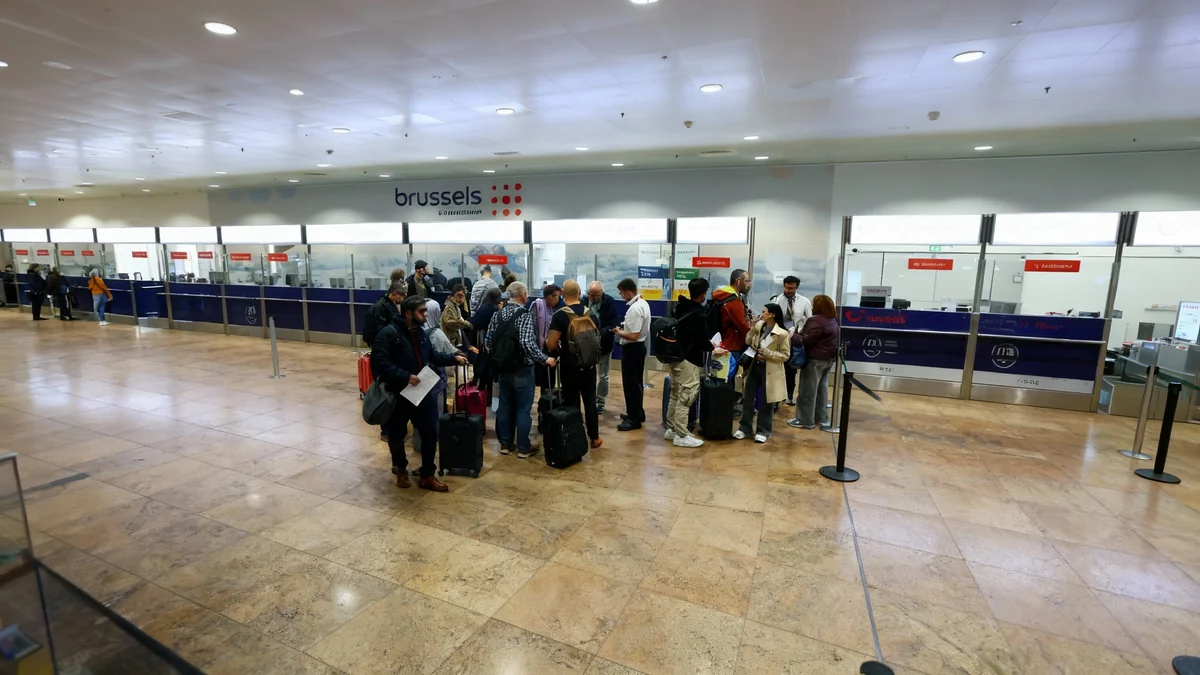Eastern Airways, a regional carrier based in the UK, has suspended all flight operations. The airline filed a notice of intention to appoint administrators on Monday, signaling it is on the verge of collapse. This move impacts hundreds of jobs across the UK and Europe and leaves many passengers stranded.
The UK Civil Aviation Authority (CAA) confirmed the cancellations, advising passengers not to travel to airports. This development marks a significant disruption for regional air travel and the communities Eastern Airways served.
Key Takeaways
- Eastern Airways has ceased all flights.
- The airline is seeking administration protection.
- Hundreds of jobs are at risk across the UK and Europe.
- Passengers are advised not to go to airports.
- Rail companies are offering free travel to affected passengers and staff.
Immediate Impact on Passengers and Staff
The suspension of services has led to widespread cancellations. Departure boards at various airports showed flights canceled, including the 7 a.m. service from Newquay to London Gatwick. Other affected routes included the 2:30 p.m. flight from Aberdeen to Wick and the 6:15 p.m. service from Teesside to Aberdeen.
Selina Chadha, the CAA’s consumer and markets director, urged travelers to find alternative transport. She stated,
“We urge passengers planning to fly with this airline not to go to the airport as all Eastern Airways flights are cancelled.”
Important Passenger Information
- Do not travel to the airport.
- Contact your credit or debit card issuer for possible chargebacks if you booked directly.
- Some rail companies are offering free standard-class travel on Tuesday and Wednesday.
Support for Stranded Travelers
In response to the disruption, several rail companies are offering assistance. London North Eastern Railway, ScotRail, TransPennine Express, and Northern Railway will provide free standard-class travel to affected passengers and staff. This offer is valid for Tuesday and Wednesday.
Scottish airline Loganair also stepped in. It announced discounted airfares for stranded passengers on flights between Aberdeen and Kirkwall or Sumburgh. This offer is available through October 30.
Eastern Airways' Background and Operations
Founded in 1997, Eastern Airways operated a network of regional routes. These flights connected various cities across the UK, Ireland, and Europe. Its base was at Humberside Airport in North Lincolnshire.
The airline also played a role in connecting remote areas. It ran subsidized services backed by the Scottish government. One key route connected Aberdeen with Wick John O’Groats, serving as a vital link for residents in northern mainland Britain.
Eastern Airways' Network
The carrier's routes included flights from:
- East Midlands
- Jersey
- Manchester
- Newcastle
- Newquay
- Southampton
- Esbjerg (Denmark)
It was also active in the North Sea oil and gas industry, transporting workers between energy hubs like Aberdeen, Humberside, and Teesside.
Financial Challenges and Industry Trends
Eastern Airways, like many other regional airlines, has faced significant financial difficulties. The COVID-19 pandemic severely impacted the aviation sector. This led to a sharp decrease in passenger demand.
Rising operational costs have also contributed to the airline's struggles. Factors such as increased fuel prices and higher maintenance expenses have squeezed profit margins for regional carriers. These challenges have made it difficult for airlines to sustain operations in a competitive market.
The airline’s move to appoint administrators provides a temporary shield from creditors. This period allows the company to explore potential rescue options or prepare for formal insolvency proceedings. The outcome will determine the future of the airline and its employees.
Future Outlook for Regional Air Travel
The suspension of Eastern Airways highlights the ongoing fragility of regional air travel. These smaller airlines often serve niche markets and remote communities. Their financial stability is crucial for maintaining connectivity.
The loss of Eastern Airways’ routes will create gaps in regional connectivity. This could particularly affect areas that relied on the airline for essential transport links. Passengers and local economies will need to adapt to these changes.
Industry experts will watch closely to see if other carriers can step in to fill the void left by Eastern Airways. The long-term effects on regional air travel in the UK and Europe remain uncertain.





